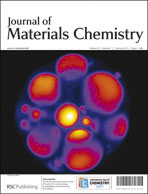Controlling the blend morphology is one of the ways to achieve high power conversion efficiency in organic bulk heterojunction (BHJ) photovoltaic devices. One simple yet effective method is “solvent additive” approach, which involves the addition of a small fraction of high boiling point solvent into the blend of donor/acceptor dissolved in another host solvent. Even though this method has been successfully applied in a number of polymer/fullerene BHJ devices, the selection rule of the choice of additive and the host solvent has yet to be fully established. In this work, we performed a systematic study of the effect of alkyl lengths of alkanedithiol additives on the nanoscale phase separation of P3HT:PC61BM blends and consequently, the power conversion efficiency (PCE) of the devices. The extent of the additive-induced phase separation is related to the additive boiling point and the degree of interaction between the additive and fullerene, as evident from grazing incidence X-ray diffractometry (GIXRD) and scanning transmission X-ray microscopy (STXM) data. We found that both the boiling point and the degree of interaction are correlated and should be considered simultaneously in the selection of the appropriate solvent additives. Lastly, PCE as high as 3.1% can be achieved in an optimally phase-separated blend due to an improvement in the charge dissociation and a decrease in bimolecular recombination.

You have access to this article
 Please wait while we load your content...
Something went wrong. Try again?
Please wait while we load your content...
Something went wrong. Try again?


 Please wait while we load your content...
Please wait while we load your content...